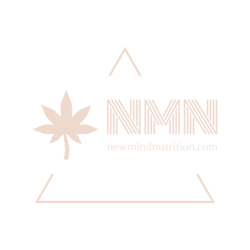The Basics of Dom and Sub
Dominance and Submission (Dom and Sub) are complex concepts that have been debated and explored in various contexts, including BDSM (Bondage, Discipline, Dominance, Submission, Sadism, and Masochism), relationships, and personal growth. At its core, Dom and Sub refer to the dynamic between two individuals where one party assumes a position of power and control, while the other yields authority and surrender. This relationship can involve physical intimacy, emotional connection, or even intellectual exchange, and can be mutually beneficial, healthy, and consensual.
H1 Header
The terms DOM and SUB refer to two fundamental concepts in the world of computer science and software development. While they are often used interchangeably, they have distinct meanings that are essential to understand for anyone working with computers or software.
DOM stands for Document Object Model, which is a representation of a document as a tree-like structure composed of nodes and edges. Each node represents an element in the document, such as a paragraph, heading, or image, while the edges represent the relationships between these elements. The DOM is used by web browsers to parse and display web pages, allowing developers to interact with and manipulate the content through JavaScript and other programming languages.
SUB, on the other hand, typically refers to a subordinate relationship or position. In various contexts, it can mean something like a subordinated employee, a subculture, or even a subscript in mathematics notation. However, in software development and computer science, SUB is often used as an abbreviation for “subroutine” or “subclass”, referring to a block of code that contains a set of statements that can be executed by another program.
Understanding the difference between DOM and SUB requires a solid grasp of computer science fundamentals, including data structures and object-oriented programming concepts. While both terms are important in their respective domains, it’s essential to approach them with clarity and precision to avoid confusion or misapplication.
Presentation Model
The terms DOM and SUB refer to fundamental concepts within computer science and programming, particularly in web development.

DOM stands for Document Object Model. It’s a programming interface for HTML and XML documents. The DOM represents the structure of a document as a tree-like data structure, where each node in the tree corresponds to an element or attribute in the document. This model allows developers to dynamically manipulate and interact with web pages by accessing and modifying their elements.
SUB, on the other hand, is often used to describe a specific type of DOM element, particularly in HTML. A SUBelement is a child element of another element, which can be represented in the DOM tree as a nested structure. In simpler terms, a SUB can be thought of as a smaller component within a larger element, sharing its parent’s properties and attributes.
These two concepts are crucial in web development, allowing developers to create dynamic user interfaces, manage web page layout, and handle events, among other tasks.
Key Players in Dom and Sub
The world of online relationships can be confusing, especially when it comes to certain terms that are thrown around on dating apps and social media platforms. Two terms in particular have gained popularity in recent years: Dom and Sub. While they may seem intimidating or even taboo, these roles actually refer to a consensual and healthy dynamic between two individuals who engage in a BDSM (Bondage, Discipline, Dominance, Submission) relationship.
H1 Header
DOM (Document Object Model) and SUB are two fundamental concepts in web development that help create and manipulate the structure of web pages. DOM allows developers to dynamically update and interact with a web page’s content, while SUB is often used to describe a specific type of database or data retrieval method.
Key players in the world of DOM include W3C (World Wide Web Consortium), which defines and maintains the HTML and XML standards that form the backbone of web development. Other notable figures include Mozilla Developer Network (MDN) and Microsoft’s Internet Explorer team, both of which provide extensive documentation and resources on implementing and optimizing DOM-based code.
Some prominent developers and designers who have made significant contributions to the field of DOM and SUB include John Resig, creator of jQuery, a popular JavaScript library that simplifies DOM manipulation. Other notable figures include Eric Meyer, renowned web designer and developer, and Ethan Marcotte, pioneer of responsive web design and advocate for accessibility in web development.
Document Object Model (Dom)
DOM and SUB are terms that may be unfamiliar to some individuals, especially those who are not familiar with web development or programming concepts. DOM stands for Document Object Model, while SUB refers to a related concept. In simple terms, DOM allows developers to manipulate and interact with the structure of a document, making it an essential tool for creating dynamic web pages.
- DOM is made up of a hierarchical representation of a document’s elements.
- It enables developers to dynamically update and change the content of web pages by accessing and modifying their HTML structure.
The DOM tree consists of nodes, including elements, attributes, and text, which are interconnected in a tree-like structure. This allows developers to traverse and manipulate the document’s structure using various methods and functions.
Understanding DOM is crucial for web developers, as it provides them with the necessary tools to create interactive web pages that respond to user input and update dynamically.
- DOM has many applications in web development, including creating responsive designs, validating HTML documents, and handling browser-specific quirks.
Subtree and Subtree Traversal
Dominance and Subordination (DOM) in computer science refer to the relationship between different types of trees or graphs, particularly in the context of tree data structures.
Key players in DOM include:
- Root Node: The topmost node in the tree that contains all other nodes.
- Siblings: Nodes that have the same parent node and are at the same level of depth.
- Children: Nodes that have only one parent node, which is the current node.
In a Subtree, key players include:
- Root Node (Subtree Root): The topmost node in the subtree.
- Siblings (Subtree Children): Nodes that are children of the root node of the subtree.
- Children (Subtree Descendants): All nodes that are descendants of the root node, including the siblings and themselves.
Key concepts in Subtrees include:
- Traverse: To visit each node in a subtree or subgraph.
- Recursion: A programming technique where a function calls itself to solve problems.
Common Operations in Dom and Sub

DOM (Document Object Model) and SUB are two fundamental concepts that are widely used in web development and other programming languages. While they may seem similar, they serve distinct purposes and have different applications. In this article, we will delve into the meanings of DOM and SUB, explore their uses, and provide a clear understanding of when to use each.
H1 Header
DOM (Document Object Model) and SUB (or Subtree) are fundamental concepts in web development, particularly when it comes to manipulating and interacting with HTML documents.
A DOM represents the structure of a document as a tree-like data structure, where each node represents an element in the document. This tree-like representation allows developers to traverse and manipulate elements using various methods and APIs. In other words, the DOM is like a blueprint or a map of the entire document, making it easy to locate specific elements and perform actions on them.
A subtree, on the other hand, refers to a portion of the DOM that includes all the elements from a particular node down to its children. This means that when you modify a subtree, you are affecting all the elements within that subtree and its children. Subtrees can be used to efficiently update or delete sections of a document without having to re-structure the entire DOM.
In terms of common operations, working with DOMs involves creating, modifying, and deleting nodes, as well as traversing the tree-like structure using methods like querySelector, querySelectorAll, and traverse down the DOM. Similarly, subtree-related operations often involve manipulating specific parts of the document, such as inserting or removing elements, updating text content, or changing element styles.
Inserting and Removing Nodes
The terms DOM (Document Object Model) and SUB refer to fundamental concepts in web development that enable the manipulation and interaction with HTML documents.
DOM represents a tree-like structure that organizes an HTML document’s elements into a hierarchical representation. It provides a way to access, modify, and traverse the document’s content, making it easier to update the visual appearance of a webpage. Each node in the DOM corresponds to an element or attribute in the HTML document.
Subtrees, on the other hand, refer to subsets of nodes within the larger DOM tree. They are useful for identifying specific groups of elements that can be targeted during DOM manipulation operations. Understanding subtrees is essential for writing efficient and effective JavaScript code.

Inserting and removing nodes in a DOM environment involve modifying the existing structure while ensuring the consistency of the document’s semantic meaning. The `insertBefore` method, for example, inserts a new node before a specified reference node within the DOM tree.
Similarly, the `removeChild` method allows developers to remove a specific node from its parent element, effectively deleting it from the DOM structure. However, it’s crucial to note that this operation also updates the reference counts of child nodes and their respective parent elements.
Merging and Sibling Nodes
The Document Object Model (DOM) and the Structure and Accessibility Modules (SAM), often referred to as DOM and Sub, are fundamental components in web development that enable developers to manipulate and interact with the content of web pages.
- DOM stands for Document Object Model, which represents the structure and hierarchy of a document, including the relationships between different parts of the document such as text nodes, element nodes, attribute nodes, and others. It provides a programmatic interface to access and modify the elements in an HTML or XML document.
- Sub, on the other hand, refers to the Structure and Accessibility Module, which is a companion module to DOM that focuses on accessibility features and the structure of web pages for screen readers and other assistive technologies. It provides methods for navigating and querying the structure of the document in a way that is accessible to users with disabilities.
- Merging nodes in the context of DOM refers to the process of combining two or more elements into one element, which can be useful for merging styles, attributes, or content from one element to another. This operation can also involve splitting an element into multiple child elements.
- Sibling nodes are the nodes that have the same parent node but are not consecutive elements in the document structure. For example, if we have a container element with two child elements, they would be siblings because they share the same parent but appear consecutively in the HTML code.
Understanding DOM, Sub, merging, and sibling nodes is essential for any web developer who wants to build dynamic and interactive web applications. By leveraging these concepts, developers can create more accessible and user-friendly interfaces that take into account the needs of users with disabilities and those using assistive technologies.
Real-World Applications of Dom and Sub
Dom and Sub are two fundamental concepts in programming languages that refer to distinct roles within an application’s architecture. In the context of the World Wide Web, these terms have become ubiquitous and are often used interchangeably. However, a closer examination reveals that Dom (Document Object Model) and Sub (short for Subset or Substitution) are actually referring to different ideas.
Dom represents the structure of a document as a tree-like representation, comprising nodes, edges, and properties. It provides a programming interface for dynamically modifying and interacting with web pages. On the other hand, the term “Sub” can refer to various concepts depending on the context, but in technical discussions, it often relates to subset relationships or substitution patterns.
Despite these nuances, both Dom and Sub have become integral to modern web development, enabling developers to build complex and dynamic user interfaces. In this article, we’ll delve into the realities of Dom and Sub, exploring their real-world applications and the common misconceptions surrounding these technical terms.
H1 Header
The terms DOM and SUB have different meanings in various contexts, leading to confusion among users. In general, DOM refers to the Document Object Model, which represents the structure and organization of a document, such as an HTML webpage.
Real-world applications of DOM include search engine result pages, where the order of results is determined by the algorithm that analyzes the content of web pages in order to provide relevant answers. For instance, when you search for a topic on Google, the search engine uses its algorithms to analyze and rank websites according to relevance, displaying them as the top results in a list ordered by their perceived importance.
Another example of DOM can be seen in recommendation systems used by online retailers. These systems use complex algorithms to analyze user behavior, such as browsing history and purchase patterns, to suggest products that are likely to interest the user.
In computing, the term SUB typically refers to substring or subsequence. For instance, a programmer might extract a subset of data from a larger dataset using a loop that iterates over a portion of the original sequence.
A common real-world application of this concept can be seen in text editors and search functions within files. When you use a search function, it is looking for specific words or phrases within a large body of text, often referred to as a substring or subsequence. This allows users to quickly find relevant information without having to read the entire document.
Client-Side Scripting
The terms DOM and SUB refer to fundamental concepts in Client-Side Scripting, specifically within the realm of Hypertext Markup Language (HTML). In this explanation, we will delve into the real-world applications of these terminologies, exploring their significance and practical uses.
DOM stands for Document Object Model, which is a representation of an HTML document as a tree-like structure consisting of nodes representing elements, attributes, and text. This model enables developers to dynamically manipulate and interact with web pages using JavaScript, making it an essential tool for creating dynamic and responsive user interfaces. For instance, DOM-based scripts can modify the content, style, and layout of a webpage in response to user interactions or other external events.
Sub, short for Subtree, refers to a subset of nodes within a larger tree structure, such as the DOM tree. It represents a smaller portion of the document’s hierarchy and can be manipulated independently of the parent node. Subtree operations allow developers to update specific parts of a webpage without affecting the rest of the content. This is particularly useful in scenarios where partial updates are needed, reducing the overhead of full page reloads or unnecessary DOM reinitialization.

Real-world applications of DOM and Sub include building interactive web applications, responsive websites, and dynamic user interfaces. For example, a e-commerce website might use DOM-based scripting to update product availability or prices in real-time, while a social media platform could utilize subtree manipulation to load only the necessary content for a specific user’s feed.
Furthermore, understanding DOM and Sub is crucial for optimizing webpage performance and accessibility. By leveraging these concepts, developers can create more efficient and responsive web experiences that cater to diverse user needs, including those with disabilities. As the web continues to evolve, the importance of mastering Client-Side Scripting fundamentals, including DOM and Sub, will only continue to grow.
Dynamic Content Generation
DOM (Document Object Model) and SUB (no specific meaning in this context, but possibly referring to “Subtree”) are fundamental concepts in web development and programming that allow for dynamic content generation and manipulation in HTML documents.
The Document Object Model represents the structure of a document as a tree-like hierarchy, where each element is an object with properties and methods. This model enables developers to access and modify elements, attributes, and text content programmatically.
- DOM is used for client-side scripting in web browsers, allowing developers to interact with web pages dynamically. For example, JavaScript can use the DOM to add or remove elements from a webpage.
- DOM is also essential for search engine optimization (SEO) and accessibility features. By manipulating the document structure, developers can improve search engine crawlability and provide assistive technologies with the information they need to render the content accurately.
SUB, on the other hand, might refer to the concept of a subtree, which is a subset of nodes from the root node down to a specific level. In this context, SUB would likely be used in conjunction with DOM to describe how elements are referenced and accessed within a document tree.
- When traversing a document tree using DOM, developers often need to reference subtrees to select or manipulate specific sets of elements. This can involve selecting child or parent nodes, querying for node matches, or creating new subtrees with modified elements.
Understanding the relationship between DOM and SUB is crucial for building efficient and scalable web applications that can dynamically generate content in response to user interactions, network requests, or external events. By mastering these concepts, developers can create complex, interactive, and responsive interfaces that provide a seamless user experience.
Best Practices for Working with Dom and Sub
In the world of computer programming, the terms DOM and SUB can be found in various contexts, often causing confusion among developers. These abbreviations are not as widely discussed as other technical terms, making it essential to understand their meanings and implications.
H1 Header
When working with Document Object Model (DOM) and Subtree (or Sub), two fundamental concepts in web development, it’s essential to understand their nuances to write high-quality HTML content effectively.
A DOM represents a website or document as a tree-like structure composed of nodes, each representing an element, attribute, or piece of text on the page. It serves as a platform for dynamic updates and manipulation of web pages using JavaScript.
On the other hand, Subtree refers to the part of a document that is contained within another element, often used to describe the relationship between elements in HTML structure.
When writing HTML code with H1 headers, best practice involves using
tags to define the main headings on your webpage.
Each level of heading can be denoted by an incrementing number of h1-h6 tags starting from
for the most prominent header, followed by
,
, and so on.
Efficient Node Selection
**What Does Dom And Sub Mean, An Honest Description**
When it comes to working with DOM (Document Object Model) and Sub, many developers are left scratching their heads, unsure of what these terms mean or how to apply them in their daily work. In this article, we’ll delve into the world of DOM and Sub, exploring what they are, how they’re used, and most importantly, best practices for working with them.
To efficiently navigate the DOM, it’s essential to understand that it represents the structure of a document as a tree-like data model composed of nodes. These nodes can be elements, attributes, text, and more. When you interact with the DOM, you’re essentially manipulating this tree-like structure to change the content, layout, or behavior of your application.
**Best Practices for Working with DOM**
1. **Use the Correct API**: The Document Object Model API provides various methods for interacting with the DOM. Familiarize yourself with these APIs to write efficient and effective code.
2. **Minimize Selecting Elements**: When selecting elements using methods like `document.getElementById()` or `document.querySelector()`, try to use classes, IDs, or attributes that uniquely identify each element. This approach reduces the number of elements searched and improves performance.
3. **Use QuerySelectorAll for Multiple Matches**: If you need to select multiple elements based on a specific condition, use `querySelectorAll()` instead of `querySelector()`. This method returns an array-like object containing all matches, allowing you to loop through them efficiently.
4. **Avoid Using GetElementById on Arrays or Loops**: When iterating over arrays or loops, avoid using `getElementById` to select elements. Instead, use a different identifier like a class name or attribute value.
5. **Cache Frequently Accessed Elements**: If an element is used repeatedly in your code, cache it in a variable to avoid repeated DOM queries and improve performance.
By following these best practices, you can efficiently work with DOM and Sub, resulting in faster, more responsive applications that provide a better user experience.
Minimizing DOM Manipulation
Understanding DOM and Sub in Web Development
DOM stands for Document Object Model, which is a programming interface for HTML documents. It represents the structure of a document as a tree-like data structure, with each element on the page being an individual node. This allows developers to dynamically manipulate the content and layout of a web page.
Sub, short for Substitution, refers to the process of replacing or updating existing content in the DOM. When working with DOM, it’s essential to minimize sub manipulation as much as possible. Over-sub manipulation can lead to performance issues, such as slower rendering times and increased memory usage.
Best Practice 1: Use a Virtual List
When dealing with lists, consider using a virtual list approach instead of creating and destroying elements on the fly. This involves creating a single, static list element and then appending or removing items from it dynamically.
Example:
- Item 1
- Item 2
- Item 3
Best Practice 2: Use a Template Engine or Microtemplate
To reduce DOM manipulation, consider using a template engine like Handlebars or Mustache to generate HTML templates. These engines allow you to define a template structure and then populate it with data, reducing the need for manual DOM creation.
Example:
/items
Best Practice 3: Use a Library or Framework
Choose a library or framework that minimizes DOM manipulation, such as React or Angular. These frameworks provide built-in solutions for managing complex DOM structures and can help reduce the need for manual sub.
Example:
- Item 1
- Item 2
- Item 3
Buy vibrating love eggs for extra excitement at Peaches and Screams Explore Toy Joy sex toys at Peaches and Screams Shop Utensil Race for playful and creative adult products at Peaches and Screams Shop ejaculating dildos for added realism at Peaches and Screams Buy non-latex condoms for a sensitive choice at Peaches and Screams Shop remote control vibrators for hands-free fun at Peaches and Screams
Electric Youth Magazine Create Cocktails at Home On the Carpet
- What Is Situationship Creep And How To Avoid Getting Stuck In Limbo - June 1, 2025
- Nu-Derm Skin System Near Holmbury St Mary, Surrey - June 1, 2025
- Retinol Peel Near Richmond, Surrey - May 31, 2025
